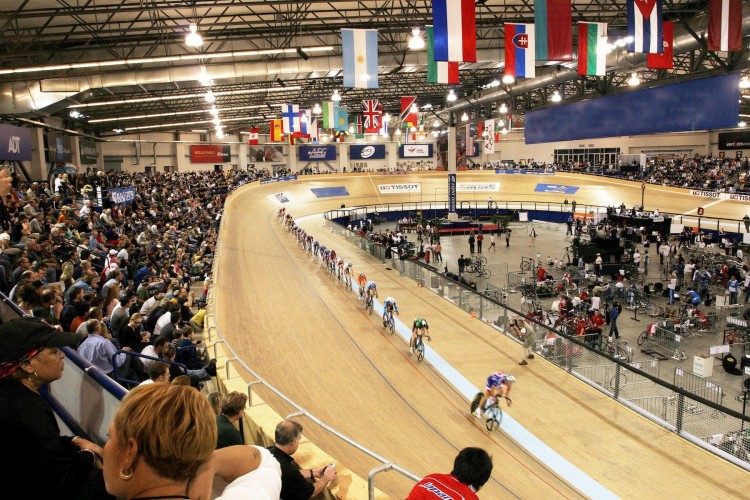NEW YORK—A hefty $40 million donation could see the building on Furman Street near Pier 5 in Brooklyn transformed into a state-of-the-art recreational facility.
While no plans have been finalized, the main feature of the indoor facility revolves around a 200-meter indoor, banked cycling track. It would be only the second indoor velodrome in the United States—the other is in Carson, Calif.
Joshua Rechnitz is underwriting the design and construction of the facility with a donation estimated at $40 million—the largest donation ever made to a New York City park. He set up, and is chairman for, The New York City Fieldhouse, the organization set up to oversee the facility.
“We want this to truly be a community endeavor that will add amenities for park users and provide a much needed all-weather sports facility,” Rechnitz said in a statement in April.
Cycling has become increasingly popular in New York City and finding a place for cyclists to stretch their legs has become increasingly difficult.
The Kissena Velodrome in Queens is the only track in the city—an outdoor track, not lit for night racing. Prospect Park is another popular spot for cyclists, but the road is shared with walkers, runners, rollerbladers, and skateboarders.
“Anyone who runs or walks in Prospect Park on a regular basis knows that cycling is a booming sport for younger people, as well as adults. The fact that this would introduce a whole different cycling opportunity makes it ideal,” said one participant at a public input meeting at Saint Francis College, June 25.
Greg Brooks, executive director of The New York City Fieldhouse, and his staff have also met with local schools and recreation groups to get input on setting up free programs for youth.
The adult riders at the June 25 meeting had no objections to paying to ride at a first-class facility.
“Most of these people are riding around on bicycles that cost $5,000 to $10,000. They can find a few hundred dollars to help this space,” a Columbia University cycling coach said.
The track plans are almost set, but what else the facility will provide is still up for debate. Brooks said flexibility is most important. Proposals for basketball, tennis, gymnastics, and volleyball courts have been discussed. If approved, the courts would be set in the middle of the bike track.
“Our point of view has been early outreach,” said Brooks at the meeting. “I could have come here with a complete plan and said, ‘This is what it looks like, tell me what you think,’ but instead we are trying to understand what people really want.”
The meeting was the third of four public input sessions, with the last one scheduled for Wednesday, July 11. During each meeting Brooks gives a presentation showing the goals of the project, along with general plan ideas, and then takes comments from the public to help drive decisions for the use of the facility.
The size of the new facility, which should not exceed 115,000 square feet, concerned some citizens at the meeting. Brooks said it will likely not be 115,000 square feet flat, meaning it would be above or below ground.
Traffic and transportation issues were not specifically addressed, other than a promise that they would be studied and considered before the final plans are submitted to the city.
The groundbreaking is set for 2014.







